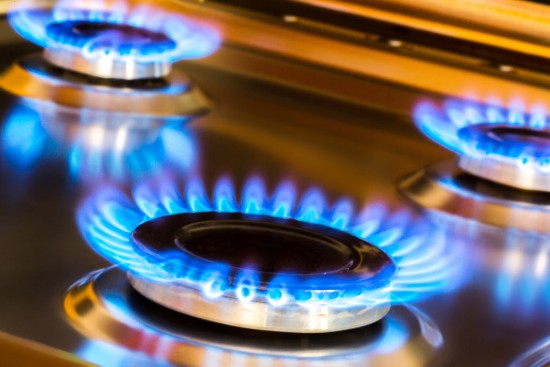The facts are this. Natural gas is mostly methane (CH4), a potent greenhouse gas (GHG) that when leaked into the atmosphere contributes to global warming more rapidly and over a shorter term than carbon dioxide (CO2). Natural gas is commonly used in heating and cooling systems in homes, apartments and other types of buildings. In much of Canada, natural gas is our primary heating fuel source. The same is true for much of the U.S.
During the presidency of Barack Obama, the U.S. government policy related to climate change made natural gas a transition fuel away from coal and oil. Utilities were encouraged to shutter their coal-fired and oil-burning infrastructure and convert it to natural gas. Today, the transitional strategy is still in place fuelled by the rationale that switching to natural gas reduced GHGs per heating unit by 42%.
In 2021 the U.S. Energy Information Administration (EIA) estimated natural gas contributed to 34% of the country’s total GHG emissions. The transitional strategy, therefore, although lessening emissions from coal and oil, was doing little to reduce the country’s global warming impact.
The Cooking with Gas Controversy
Natural gas, however, is more than just a fuel to heat homes and businesses. In the United States cooking with gas appears to be the method of choice for the majority of homeowners who prefer it to electricity.
The latest controversy has arisen because an official, Richard Trumka Jr., a member of the U.S. Consumer Product Safety Commission told a Bloomberg reporter that there is research linking gas stoves in homes to increased levels of asthma in children. Trumka mentioned that the agency was considering regulating natural gas indoor home appliances because of this remark that “products that can’t be made safe can be banned.”
This comment was interpreted by some in politics to be an assault on freedom of choice with Matt Gaetz, a Republican Member of the House tweeting “you’ll have to pry it from my COLD DEAD HANDS!” (Note: The use of uppercase on Twitter is the equivalent of shouting.)
Nitrogen Dioxide Leaks, Not Methane, The Problem
What does the science say about cooking with gas pertaining to emissions? How much does it contribute to respiratory illnesses in children? And how much does it contribute to global warming?
The former is a real issue, the latter not nearly as much. And it is not CH4 consumption that is the kitchen appliance issue. Almost all the CH4 used during cooking burns up. The problem occurs if an appliance is not well maintained because that’s when leaks occur. Those leaks can be CH4. But they can also be carbon monoxide (CO) and nitrogen dioxide (NO2). CO leaks can kill you. NO2 leaks contribute to increased incidents of respiratory disease.
NO2 can also come from emissions produced by internal combustion engines. It contributes to ground-level ozone in cities, a known respiratory irritant that can cause asthma in children and pulmonary disease in adults. In China, for example, where urban air pollution from burning coal and other fossil fuels is far worse, the daily death toll from the air is 4,400. And if you don’t believe that NO2 and other noxious gasses are the real deal, just walk along a busy city street during rush hour and feel the effects of these pollutants on your eyes and in your nose. The NO2 and other pollutants coming from tailpipes are exposing you to medical risk.
Outside or Inside Air Pollution
So when you get home and light the stove or turn up the thermostat, do you want to continue experiencing what is on the outside? The risk of exposure to indoor air pollution is real. But which is worse, the outside air or the inside air?
The outside air undoubtedly. That’s because the actual contribution cooking with gas in a home makes, according to U.S. figures amounts to no more than 0.1% of the total GHG emissions produced by the country annually. And cooking with gas uses only 3% of the natural gas consumed in homes. The rest is for heating. So is this really a kitchen appliance problem or more a problem about the right fuel energy choices to be made now and in the future to achieve two goals: respiratory disease reduction, and climate change mitigation?
For Matt Gaetz with his cold dead hands’ declaration, I wonder, would he have been so vehement if the agency spokesperson had cited furnaces and water heaters. After all, that stuff is hidden away in the utility room or basement and not front and centre with the stainless-steel, four-burner, state-of-the-art appliance in the family kitchen surrounded by granite countertops.
Asthma, Pulmonary Disease and Gas Stoves
Studies that link respiratory illnesses like asthma in children and gas stoves show varying increases of between 12 and 42%. As early as 2005, the World Health Organization (WHO) produced guidelines about exposure to NO2 from gas stoves. While the U.S. has yet to do this, Health Canada, in 2015, revised its recommendations on indoor air quality referencing gas stoves as a NO2 issue particularly during brief periods after a burner is shut off. The Canadian guidelines stated that gas stoves shouldn’t be used without a hood fan turned on and connected directly to the outdoors, or the use of other ventilation such as an open kitchen window.
The gas stove controversy has seen new fuel poured upon it by New York City which recently announced a change to its municipal building code, banning gas hookups for all new construction. The ban didn’t apply to legacy buildings. Other municipalities and some states enacted similar new gas hookup bans, while at the same time in protest, a number of contrarian jurisdictions banned the ban.
A Final Word
The greater natural gas risk really isn’t centred on the kitchen stove although the NO2 link to childhood asthma and adult pulmonary disease cannot be discounted. The real risk is the reliance on and acceptance of a transitional fuel strategy to get to net zero that has entrenched natural gas as a greener option to combat climate change.
Even the European Union with all its environmental activism recently gave natural gas the green stamp which had more to do with the Russian invasion of Ukraine than combatting climate change.
The result of the transitional fuel notion means we continue to pay for a policy that has outlived its short-term purpose which was to get utilities to shutter coal-fired operations. Natural gas is no different from other fossil fuels that produce GHG emissions. It is certainly not green and definitely continues to contribute to rising atmospheric and ocean temperatures.










I find it hard to believe that gas is the cause of asthma. People have been using gas for longer than asthma. In the 1970’s inhalers and allergies were rare, by the 1990’s – early 2000’s there was a huge increase per capita. What changed ?
Cookware coatings (often toxic, some also release toxic gas when heated), toxic packaging materials and dubious “food additives”, artificial sweeteners that are worse than natural sugar, microwave ovens. Household chemicals also changed. Another thing that changed a lot was gmo. Asthma, = gas or the list of other changes I mentioned above?
There are chemicals in plastic food containers that will also mess up hormones, a much more credible source of bad health.
Problem with all forms of energy corporations is that; 1, they are very greedy with prices. 2, they are politically motivated. 3, they are corrupt.
Gas is #1 for cooking because you can have full control of the temperature. #2 is fire, not very convenient and requires skill. #3 is electric, cheap to make, very expensive to buy, slow to heat, often uneven heat, very convenient, safer than gas (explosion hazard compared to electrocution hazard).
When it comes to rental housing, you get what you get be it electric or gas. Rentals seldom change the fuel type. As for the environment, all are bad. Fossil fuels pollute, gas pollutes, electric pollutes in several ways pending on how it’s turbines are powered.
Hi David, Our physicological understanding of what causes childhood respiratory distress is fairly recent. We know that ground-level ozone is linked to asthma and other chronic respiratory diseases. We also know that nitrous oxides affect the developing lungs of children. Remember the one organ we are born with that only starts getting used after leaving the birth canal is our lungs. They do not fully develop for several years and can easily be compromised in the first few years of life by exposure to noxious gasses. In this case it is badly maintained gas ranges that leak nitrous oxides after being shut off that is seen as the culprit.
My daughter just moved into a house with a gas range. She has a toddler. I asked her to have someone qualified to come in and check that the appliance is running properly with no leaks. This is something that should also be considered if you have immune compromised people living in a home, or the elderly who may also have lung issues.
Bad air in China creates excess mortality rates of 3 to 5 million per year. Ignoring bad air is both bad policy and bad politics.
Hi Len, there are many sources to this asthma problem.
As seen with the recent US contaminated processed baby food that gets the OK stamp of approval from the FDA, GMO pollen in the air, polymers and chemicals used for clothing or crib matts or toys etc. that are known to releases toxic gas and or leaching chemicals into packaged food etc. Best to stick with natural materials rather than artificial.
The larger problem with gas, other than gas leak dangers, is deadly carbon monoxide. carbon monoxide detectors (installed like regular smoke detectors) should be a legal requirement in the same way smoke detectors are now.
I grew up in a gas range and heated house up to the age of around 7, everybody was okay. In saying that, the dangers of gas leaks should be a basic knowledge for anybody that uses it. I once witnessed an official gas service repair guy, in the Midwest, come to my then bad rental house to check a leak that the slum lord failed to mention. The idiot went to switch on the main light in the basement where the obvious gas leak was !!! That did not fill me with confidence of his “qualifications”. Luckily, I had previously switched off the main power box just in case somebody tried to use any electrics before the leak was fixed.
(It is also worth checking for radon gas in your housing area, anywhere that is built on or of granite rock produces low radioactive radon gas. You can get smoke detector like devices installed for that too.)
We all need clean air, clean water and clean natural food to be healthy. It is a basic nessesity for life on the planet.
Poor air quality is not all down to China, or gas. In 1952 London, the smog was so bad it killed 4000 people (1952 the city population was around 8 million). That was not so much “gas” as it was cheap coal used by all industry and residential housing 24/7, then you had dense city lead lined vehicle emissions on top of that.
Other nations bad for pollution are Africa, America and India. US soda companies have destroyed many river ecosystems around the world, US corporations happily exploit Chinese industrial manufacturing for cheap goods to sell in America, Monsanto and other chemical corporations (Bayer AG and DuPont) are happy to dump toxic chemicals everywhere so much that there is a long line of current lawsuits filed against them (DuPonts ‘Agent Orange’ is still a problem in Asian water tables, look up a movie called ‘Dark Waters’ for pollution in America), India happily pollutes the world with little to no industrial regulations as it recycles the worlds unwanted goods (also, remember Union carbide?), Africa is constantly ransacked and destroyed by many nations for its mineral resources while trashing the ecosystems and African lives. This is not a smart way to “evolve”.
People should think twice about that “attractive” new car smell, it is the “fresh smell” of toxic solvents, rubber chemicals, plastics and adhesives. Not very healthy to breath in, especially in a confined area like a vehicle. Something to remember when “child onboard”.
There are many sources to consider regarding the cause of asthma. Stick to natural materials, natural foods, plant some trees to help clean up the air quality and, think about what we are about to buy. Do we really need these pointless toxic chemicals for “air freshener” or to just literally flush money down the clean toilet or unblocked drain to “smell nicer” than no odour at all ? (Pointless CON$umerism).
That is a good place to start a clean up. Boycotting plastic is another. Who wants to live in a vile sewer that spreads disease ?
I also suspect that the effects of ionized air (electric pollution) is another source for asthma. Then there is false diagnosis to sell inhalers, in the same way that diabetes is big money, they know fine well what causes it but they refuse to stop it. Money is more important than life itself to these people. Zero ethics.